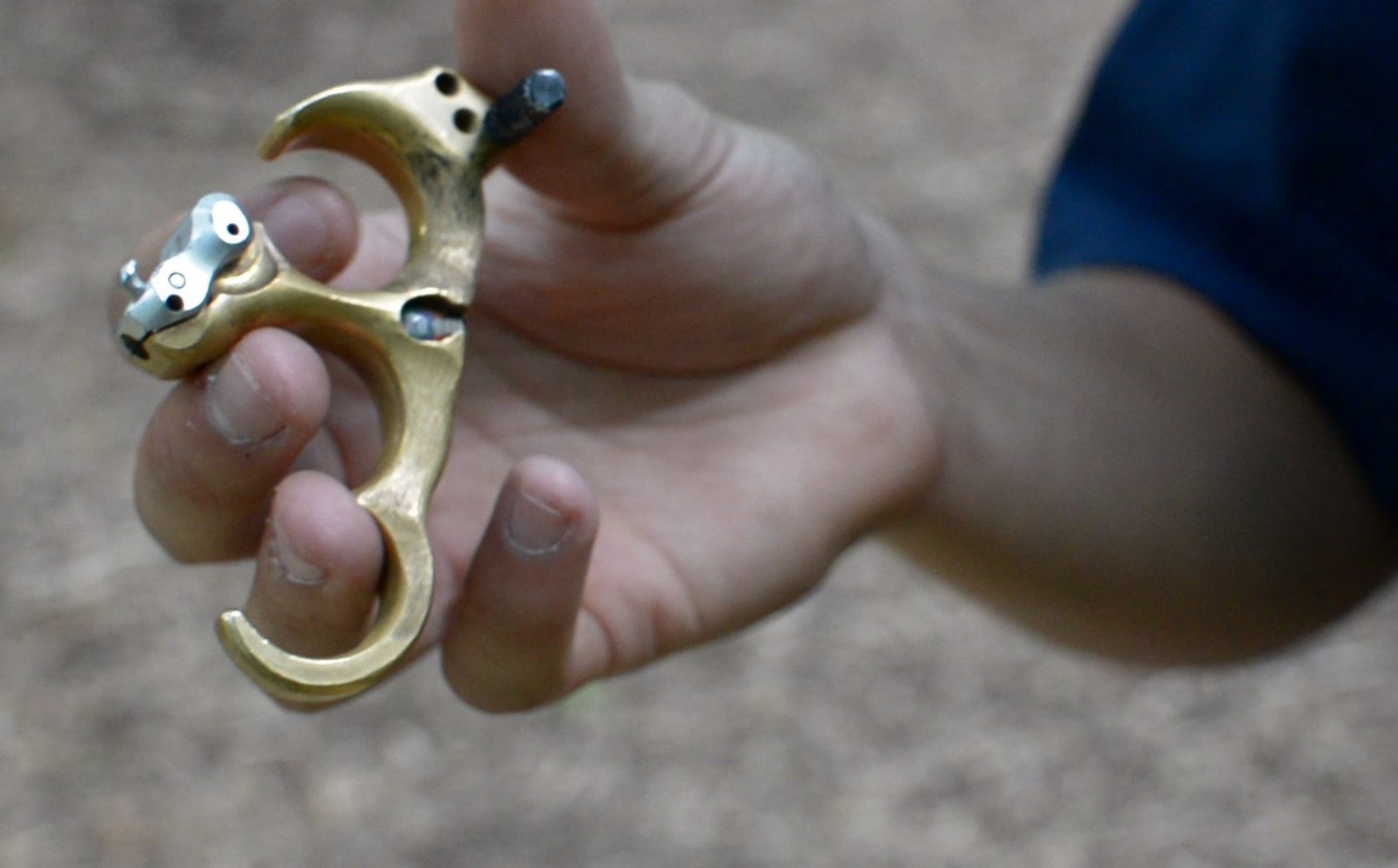When it comes to purchasing hunting gear, we buy clothing, equipment, etc. based on how well it performs a given task – choosing the right bow release is no different. Ultimately, the decision on which release aid to use will come down to personal preference. In the video below, professional archer, David Houser, shares his thoughts and demonstrates how to use both a back tension release and the more common trigger or wrist type release.
Trigger or Wrist Release
A trigger release is by far the most common release style used by hunters. It attaches to one’s wrist via a Velcro strap or buckle and the trigger mechanism extends down toward the palm of your hand. The release will have either a hook or jaw system to loop and hold onto the bow string when drawn. When you’re ready to fire, slowly squeeze the trigger like you would on a rifle.
 David takes aim with the help of his trigger style release aid.
David takes aim with the help of his trigger style release aid.
A wrist release is easy to use and has many hunter friendly features. First, once you put it on it’ll always be attached to your wrist. For a hunter, this makes it a lot easier to remember to bring out to the woods and also means you won’t have to worry about dropping it from your treestand. Also, since it’s attached to your wrist, the weight of the draw is transferred to your wrist and forearm making it easier to draw and hold back.
Knowing when the trigger will go off is one attribute that can be either a negative or positive depending on the archer. For some, they like and want to know exactly when the release will fire and launch an arrow. For others, it can cause the all too common problem known as “trigger punch” or “target panic”. Target panic is a common problem for many bowhunters and results in very poor groupings. What happens is when the archer finally locks onto the bulls-eye, they punch the trigger instead of slowly squeezing it. Since the anticipation causes a knee-jerk reaction, it’s often a difficult habit to overcome, especially when it comes to a live game animal. For hunters that suffer from target panic, using a back tension release will usually help solve their problem. More on target panic later.
Back Tension Release
Back tension release aids are somewhat new to the market, but are extremely popular amongst competition shooters. As David described in the video above, he prefers this type of release in high pressure situations because of the surprise release. The surprise release forces the shooter to hold the pin on bulls-eye until it fires. There is no manual trigger punch, but rather an increase in tension and slight rotation causes a “surprise release”.
 David takes aim with the help of his back tension release aid.
David takes aim with the help of his back tension release aid.
A back tension release is not as intuitive as an index trigger release, but with a little practice is fairly easy to get the hang of. The whole purpose of the surprise release is that it’s meant to be a surprise when it finally fires. For some, understanding the changes in tension can be tough and often leads to premature shots. There are a few back tension releases that attach to your wrist, but the large majority are handheld. Just like the trigger releases, some hunters find this advantageous, while others prefer a release that’s always attached. The handheld back tension releases are less cumbersome and can be stowed away in a pocket or pouch fairly easy, but this also makes them easier to lose or fumble with when needed at a moment’s notice. Some hunters prefer them because they don’t get in the way or make unwanted noise when you’re climbing into a stand, adding layers of clothes, or reaching for objects in your pack. The bottom line is you should use whatever you practice and feel confident with.
The surprise release is said by many as the way to cure target panic. Target panic comes in several forms and if you struggle with any of the following, you may want to turn to a back tension or thumb trigger type release.
Forms of Target Panic
- You struggle to find and hold on the center of the target with your pin. As a result, you fire as you fly by the bull’s-eye. This causes you to punch the trigger and leads to inconsistent shots.
- You can’t seem to settle the pin on the bull’s-eye, instead you freeze just below, above or to the side of the 10-ring. You probably rely on a fly-by shot as your only means to try to compensate for this common archery phenomenon.
- You have no trouble locking onto the bull’s-eye of the target, but when it comes time to squeeze the trigger, the anticipation causes you to punch it instead.
Since target panic can happen at any time, often at the worst time, it’s likely the reason back tension releases are used by nearly every competitive archer. The consistent anchor point and surprise release are a couple of ways the back tension release helps archers.
You should always test out several different releases before choosing one to buy.







